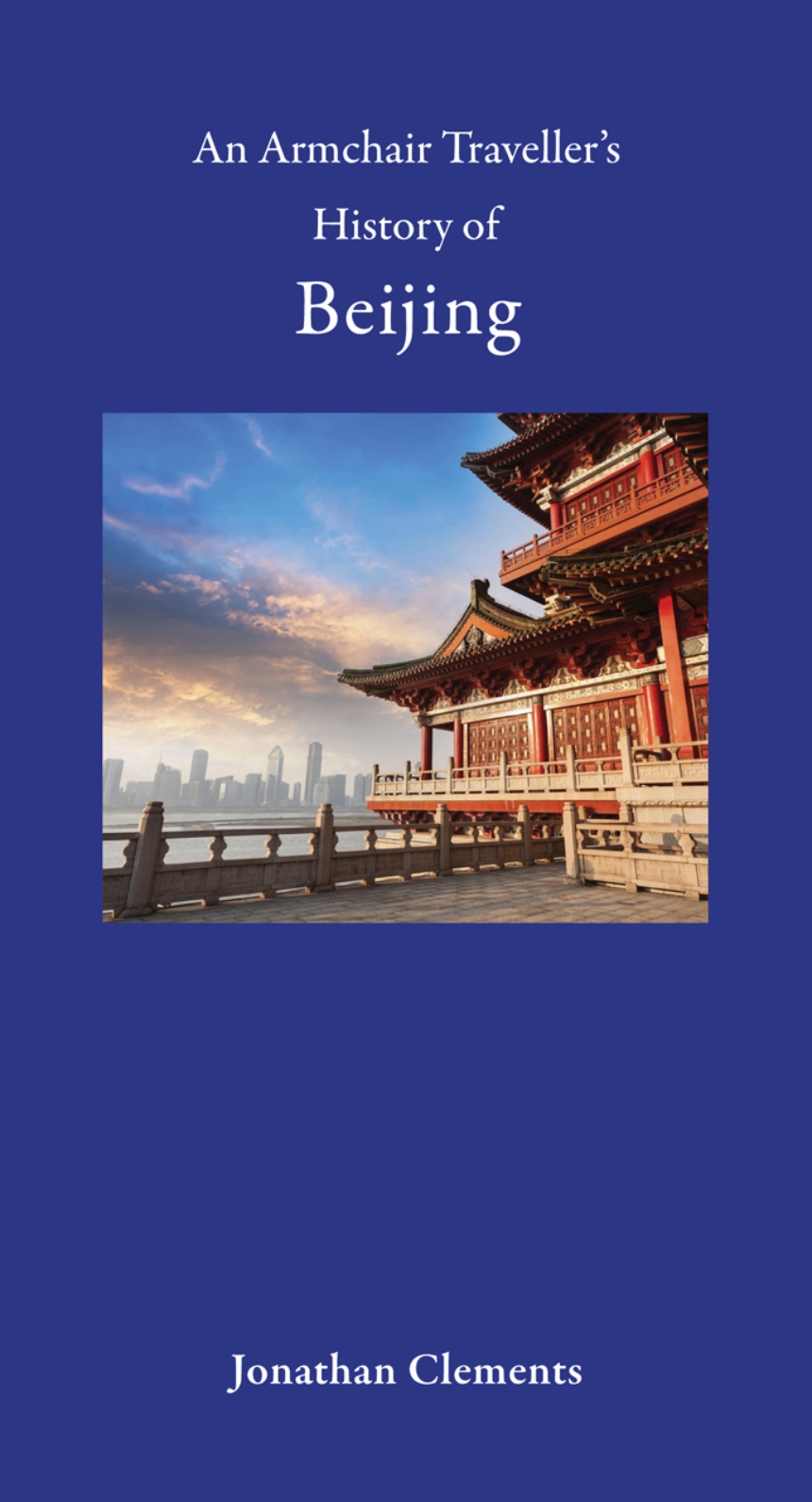Distributed for Haus Publishing
An Armchair Traveller’s History of Beijing
As China’s global influence continues to rise, its capital, Beijing, has become increasingly important—and a popular tourist destination, greeting close to five million international visitors each year. An Armchair Traveller’s History of Beijing presents the capital from its earliest beginnings as a prehistoric campsite for Peking Man through its fluctuating fortunes under a dozen dynasties.
Home to capitals of several states over time, the site of modern Beijing has been ruled by Mongolian chiefs and the glorious Ming emperors, whose tombs can still be found on its outskirts. Through Beijing, we can experience Chinese history itself, including its more famous residents—including Khubilai Khan, Mulan, and Marco Polo. Special emphasis is placed on Beijing’s precarious heritage in the twenty-first century, as modern construction wipes out much of the old city to make way for homes for twenty million people.
This book also offers detailed information on sites of tourist interest, including the pros and cons of different sections of the Great Wall and the best ways to see the Forbidden City and the fast-disappearing relics of the city’s Manchu and Maoist eras. A chapter on food and drink examines not only local delicacies, but the many other Chinese dishes that form part of Beijing’s rich dining traditions. With its blend of rich history and expert tips, An Armchair Traveller’s History of Beijing is an essential introduction to one of the world’s most remarkable cities.
Home to capitals of several states over time, the site of modern Beijing has been ruled by Mongolian chiefs and the glorious Ming emperors, whose tombs can still be found on its outskirts. Through Beijing, we can experience Chinese history itself, including its more famous residents—including Khubilai Khan, Mulan, and Marco Polo. Special emphasis is placed on Beijing’s precarious heritage in the twenty-first century, as modern construction wipes out much of the old city to make way for homes for twenty million people.
This book also offers detailed information on sites of tourist interest, including the pros and cons of different sections of the Great Wall and the best ways to see the Forbidden City and the fast-disappearing relics of the city’s Manchu and Maoist eras. A chapter on food and drink examines not only local delicacies, but the many other Chinese dishes that form part of Beijing’s rich dining traditions. With its blend of rich history and expert tips, An Armchair Traveller’s History of Beijing is an essential introduction to one of the world’s most remarkable cities.
320 pages | 2 maps | 4 1/2 x 8 1/4 | © 2016
History: Asian History
Travel and Tourism: Tourism and History
Reviews
Table of Contents
Acknowledgements
Introduction
Dynasties
1: The Land of Swallows: Prehistory to 221 BC
The Discovery of Peking Man
The Waste of the Bitter Sea
The Place of Thistles
Intrigues of the Warring States
The Plot to Kill a King
2: North and South: 221 BC-AD 1215
Beijing as a Borderland
The Ballad of Mulan
The Life and Death of Nezha
South, Middle and Holy Capital
The Bridge of Magpies
3: Khanbalikh: 1215-1368
The Chessboard Streets
The Tartar City
The ‘Marco Polo Bridge’
The Drum and Bell Towers
4: The Forbidden City: 1368-1644
Perpetual Happiness
The Living God of Wealth
The Centre of the World
The Eight Great Sights
The Advent of the Manchus
5: ‘Peking’: 1644-1912
A Square Atop a Rectangle
Lanes and Alleys
Foreign Mud
The Origin of ‘Peking’
The Empress Dowager
6: Northern Peace: 1912-1949
The 100-Day Empire
The May 4th Movement
The People’s Republic of China
7: Empty Spaces: 1949-1989
Permanent Revolution
The Underground City
The Goddess of Democracy
8: Beijing in the 21st Century
The 50th Anniversary
The Demolition Derby
Modern Ghosts
Interesting Times
9: Eating and Drinking
Food
Drink
Alcohol
10: Travel Logistics
Getting Around
Security Issues
Shopping
Postage and Packing
11: Gazetteer
The Centre: Tiananmen, the Forbidden City and environs
Xicheng (West Central)
Dongcheng (East Central)
Chaoyang (East Suburbs)
Fengtai (Southern Suburbs)
Haidian (West Suburbs)
Shijingshan (Western Hills)
Further Afield
Chronology of Major Events
Further Reading and References
Introduction
Dynasties
1: The Land of Swallows: Prehistory to 221 BC
The Discovery of Peking Man
The Waste of the Bitter Sea
The Place of Thistles
Intrigues of the Warring States
The Plot to Kill a King
2: North and South: 221 BC-AD 1215
Beijing as a Borderland
The Ballad of Mulan
The Life and Death of Nezha
South, Middle and Holy Capital
The Bridge of Magpies
3: Khanbalikh: 1215-1368
The Chessboard Streets
The Tartar City
The ‘Marco Polo Bridge’
The Drum and Bell Towers
4: The Forbidden City: 1368-1644
Perpetual Happiness
The Living God of Wealth
The Centre of the World
The Eight Great Sights
The Advent of the Manchus
5: ‘Peking’: 1644-1912
A Square Atop a Rectangle
Lanes and Alleys
Foreign Mud
The Origin of ‘Peking’
The Empress Dowager
6: Northern Peace: 1912-1949
The 100-Day Empire
The May 4th Movement
The People’s Republic of China
7: Empty Spaces: 1949-1989
Permanent Revolution
The Underground City
The Goddess of Democracy
8: Beijing in the 21st Century
The 50th Anniversary
The Demolition Derby
Modern Ghosts
Interesting Times
9: Eating and Drinking
Food
Drink
Alcohol
10: Travel Logistics
Getting Around
Security Issues
Shopping
Postage and Packing
11: Gazetteer
The Centre: Tiananmen, the Forbidden City and environs
Xicheng (West Central)
Dongcheng (East Central)
Chaoyang (East Suburbs)
Fengtai (Southern Suburbs)
Haidian (West Suburbs)
Shijingshan (Western Hills)
Further Afield
Chronology of Major Events
Further Reading and References

